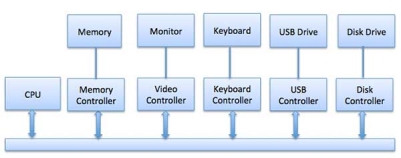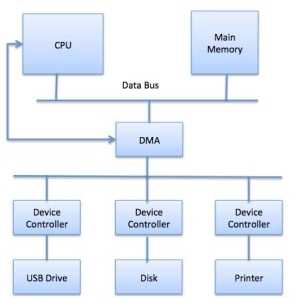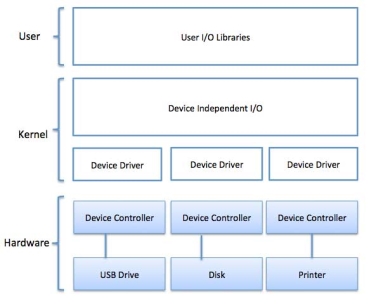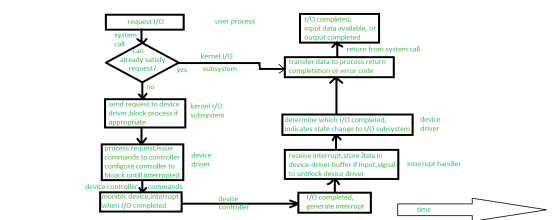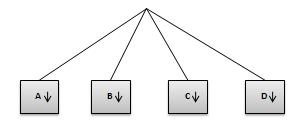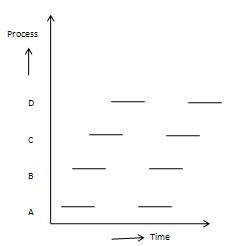|
|
|
Step | Description |
1 | Device driver is instructed to transfer disk data to a buffer address X. |
2 | Device driver then instruct disk controller to transfer data to buffer. |
3 | Disk controller starts DMA transfer. |
4 | Disk controller sends each byte to DMA controller. |
5 | DMA controller transfers bytes to buffer, increases the memory address, decreases the counter C until C becomes zero. |
6 | When C becomes zero, DMA interrupts CPU to signal transfer completion. |
|
There is need of surface whenever any CPU wants to communicate with I/O devices. The interface is used to interpret address which is generated by CPU. Thus, surface is used to communicate to I/O devices i.e. to share information between CPU and I/O devices interface is used which is called as I/O Interface.Various applications of I/O Interface:
Application of I/O is that we can say interface have access to open any file without any kind of information about file i.e., even basic information of file is unknown. It also has feature that it can be used to also add new devices to computer system even it does not cause any kind of interrupt to operating system. It can also use to abstract differences in I/O devices by identifying general kinds. The access to each of general kind is through standardized set of function which is called as interface.Each type of operating system has its own category for interface of device-drivers. The device which is given may ship with multiple device-drivers-for instance, drivers for Windows, Linux, AIX and Mac OS, devices may is varied by dimensions which is as illustrated in the following table:
S.NO | Basis | Alteration | Example |
1 | Mode of Data-transfer | character or block | terminal disk |
2 | Method of Accessing data | sequential or random | modem, CD-ROM |
3 | Transfer schedule | synchronous or asynchronous | tape, keyboard |
4 | Sharing methods | dedicated or sharable | tape, keyboard |
5 | Speed of device | latency, seek time, transfer rate, delay between operations | latency, seek time, transfer rate, delay between operations |
6 | I/O Interface | read only, write only, read-write | CD-ROM graphics controller disk |
A character stream or block both transfers data in form of bytes. The difference between both of them is that character-stream transfers bytes in linear way i.e., one after another whereas block transfers whole byte in single unit.
To transfer data in fixed order determined by device, we use sequential device whereas user to instruct device to seek to any of data storage locations, random-access device is used.
Data transfers with predictable response times is performed by synchronous device, in coordination with others aspects of system. An irregular or unpredictable response times not coordinated with other computer events is exhibits by an asynchronous device.
Several processes or threads can be used concurrently by sharable device; whereas dedicated device cannot.
The speed of device has range set which is of few bytes per second to few gega-bytes per second.
Different devices perform different operations, some supports both input and output, but others supports only one data transfer direction either input or output.
|
|
|
|
Job | Burst Time |
1 | 10 |
2 | 29 |
3 | 3 |
4 | 7 |
4 | 12 |
|
Job | Waiting Time |
1 | 0 |
2 | 10 |
3 | 39 |
4 | 42 |
5 | 49 |
| 140 |

Job | Waiting Time |
1 | 10 |
2 | 32 |
3 | 0 |
4 | 3 |
5 | 20 |
| 65 |
|
Job | Waiting Time |
1 | 0 |
2 | 32 |
3 | 20 |
4 | 23 |
5 | 40 |
| 115 |
- Response time
- Turnaround time
- Waiting time
